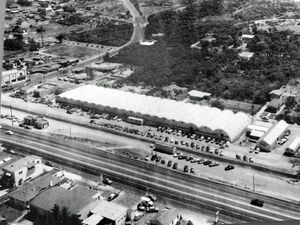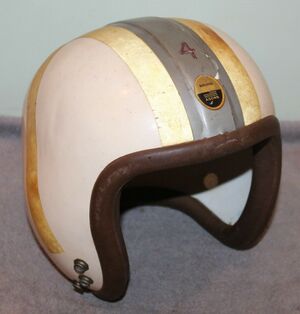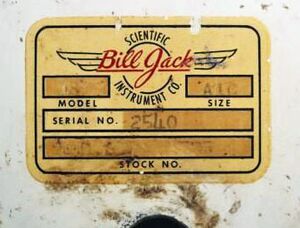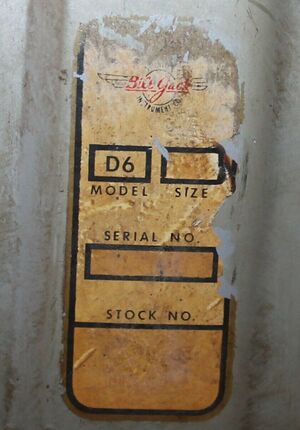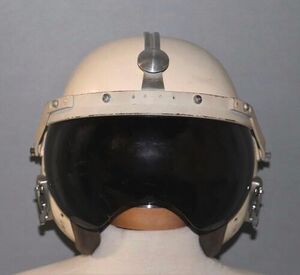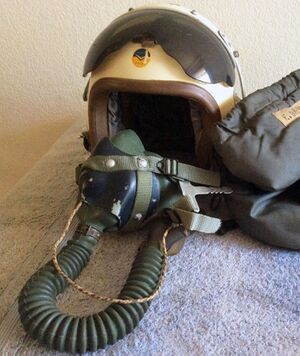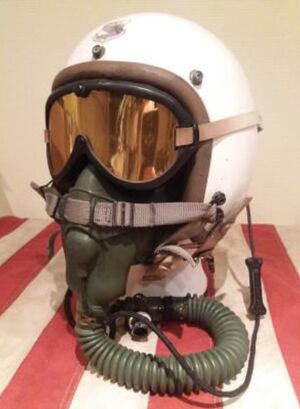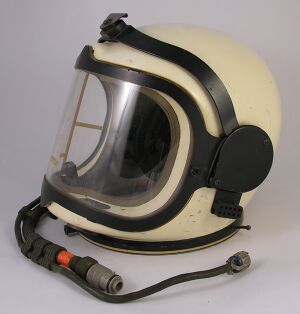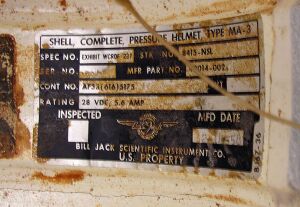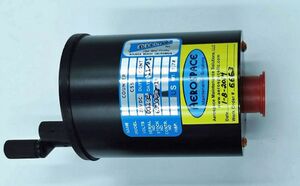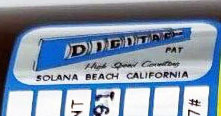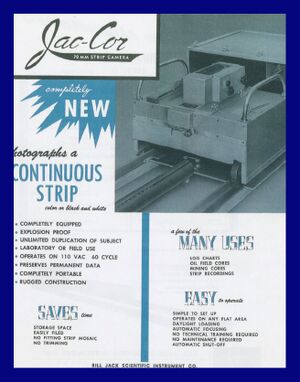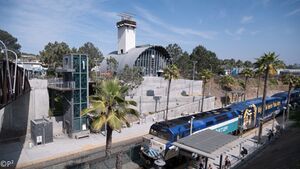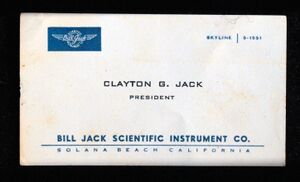Bill Jack Scientific Instruments
This is a sequel to the Jack and Heintz wiki Jack and Heintz
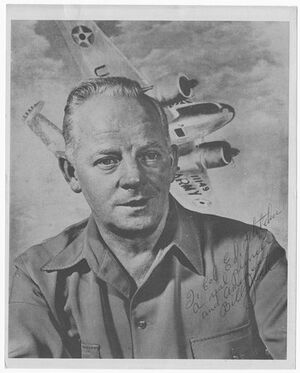
Background
There is extensive information online regarding Bill Jack and the JAHCO business he formed in 1940 with partner Ralph Heintz. After attempting a start-up in Palo Alto California, the 2 men moved the business to Bedford Ohio after a rift with the local California machinists union. The company grew from 37 employees in 1940 to 8700 in 1942 as it manufactured aircraft parts for use in the war effort. After making record-breaking profits, government auditors claimed illegal accounting methods had been employed. This led Bill Jack and Ralph Heintz to sell JAHCO Precision Tool in 1946 for $8M in a deal with B.C. Milner and Byron C. Foy; Bill Jack's portion was 75% and Ralph Heintz received 25%. In 2004 dollars this would be $84M for Bill Jack and, with annual profits for the previous years, he would have accrued over $25M in 1946 dollars, a sum equivalent to $350M in 2004 dollars[2]. The sale also provided Mr. Jack with a salary of $40K a year for three years plus the ability to occupy an office at the factory and rights to the employee program (benefits).
Mr. Heintz, as inventor and engineer, was a more passive figure and eventually moved back to his home in the San Francisco Bay Area but Mr. Jack stayed on in Cleveland. At the factory, now making fractional horsepower electric motors and bearings, he wanted to continue to use the microphone that broadcast audio throughout what he probably still regarded as "his" factory to speak to workers on whatever topic he thought would help productivity. Management reined Mr. Jack in and stopped him from using his previous management methods, this upset him so much that he resigned in a spat.
Founding
Bill Jack clearly planned to run a business again as shown by his forming Bill Jack Industries Incorporated on May 4, 1949 in the small community of Solana Beach, 20 miles North of San Diego. A short time later, on Nov 9, 1949[3] he renamed it Bill Jack Scientific Instruments, Inc.
By 1950 the firm was operating out of a number of Quonset huts assembled on South Cedros Avenue. With their unique design they exhibit "Solana Beach’s iconic curved rooflines" located along an historic segment of US highway 101 which now, just one mile North of town, runs along the coast continuing to Tumwater Washington. Running parallel to this segment of highway 101 is a rail line that carries freight interspersed with Coaster commuter trains that continue North to Oceanside where they connect with the Los Angeles Metrorail, as well as Amtrak trains.
Manufacturing Diversified Products
Details on some of the products made at the new factory emerged from an interview with Nancy Gottfredson of the Solana Beach Civic & Historical Society when she wrote[4]: "Jack’s company, which employed about 600 people, built, among other things, reconnaissance photographic equipment, motors, tachometers and police helmets. In the early 1950s, it began making helmets for fliers who were just beginning to break the sound barrier. Indy drivers wore them, too."
Flight helmets appear to have been the major product of Bill Jack Scientific Instruments. Helmets made by the company now reside in private collections and occasionally become available for sale on public platforms.
Collectors of aeronautical hardware [http://www.salimbeti.com/aviation/helmets5.htm][5] seek and place high value on helmets bearing the Bill Jack logo.
One of the Bill Jack Scientific flight helmets resides in the Smithsonian National Air and Space Museum[6]. It was worn by William P. "Bill" Suitor when he served as the rocket belt pilot for Bell Aerosystems from March 1964 to June 1970 where he set records for flying with a rocket belt.
The Smithsonian webpage has photos and describes the mask: "Overall, fiberglass shell; nylon chin strap with non-ferrous buckle; foam strip around face opening."
The one-piece shell of helmets made in this era consisted of layers of fiberglass cloth arranged on a form with polymeric resin applied in layers then, when cured, the edges trimmed and it is polished then painted, altogether a process requiring artistic skills and attention to detail. A foam liner is added for cushioning and for sound dampening and finally hardware for attaching communications devices and an oxygen mask is installed. Knowing these were made to government specifications meant QA inspections were probably done prior to a mask being accepted for use.
The San Diego Air & Space Museum has archived photos of a Bill Jack Scientific Instrument Co. helmet and its label.
Notable in this helmet is the wide, tinted plastic (polarized?) visor which provided an improved view compared to wearing goggles. This would also serve as protection from wind blast, the extreme pressure that occurs if an emergency seat ejection became necessary. Clearance is provided for an oxygen mask; pilots flying at or above around 14,000 feet require oxygen to prevent blackouts.
Goggles and visors employed were probably made by Polaroid Corp., that company provided most of the M-1944 goggles used by the government, both on ground and in the air. In 1929 Edwin Land patented a method for making polarized plastic and his Polaroid Corp. was a source for the plastic lenses used in face masks[7]. A detailed study of plastics used in goggles and aeronautics is that done by Odile Madden et. al. here.
A basic helmet design is the "Bill Jack D-6" pictured. The small decal on the front says "Sound Absorb". As helmets were transitioning from being used by pilots and crew of rotary-engine aircraft to jets and helicopters, improved sound reduction became necessary.
A Bill Jack D-8 helmet with hinged visor, oxygen mask and storage bag is shown (courtesy eBay seller), the decal on the front says "FLITE SOUND" and this un-trademarked logo continued on helmets made by Cal-Mil company after they acquired rights from Bill Jack Scientific.
Probably the most refined helmets produced by Bill Jack Scientific Instrument Co. were the D-10 "Bill Jack" designs used by USAF SAC during the 50's. These included an MS22001 oxygen mask attached and a fixed visor with a reflective gold coating designed to protect the pilot's eyes in the event of a nuclear flash. Snaps were provided for attaching a wide brimmed sun shield.
Info on modern anti-nuclear-flash technology can be found here ref: EEU-2/P
Steven C. Norris describes how Bill Jack D-10 helmets (USAF designated HGU-9/P) were used by crewmembers of B-52 and B-47 bombers as they flew Airborne Alert missions in 1961[8]and the reference states that Bill Jack Scientific Instrument Co. was acquired by CAL-MIL Plastic Products Co. around 1965. CAL-MIL continued manufacturing helmets in Carlsbad, CA for an undetermined period.
Specialized helmets intended for high altitude flight were also made at Bill Jack Scientific, shown is a rare model MA-3 full pressure helmet. Note date of manufacture 1958. To be used at extreme altitudes, helmets of this type were interlocked with a seal where they attach to the pilot's fight suit. An electrical heating element was also built into the helmet.
MA-3 helmets remained in USAF service until 1964 and considerably longer in various other air forces (p.165, NASA paper Dressing for Altitude by Dennis R. Jenkins.
An Employee recalls working at Bill Jack Scientific Instruments
In an interview recorded by the Solana Beach Civic and Historical Society Apr. 20, 2004, Everett R. (Rich) Price, a former employee of Bill Jack Scientific Instrument Co., describes how "he was instrumental in developing a method of increasing helmet production line throughput and mentioned some of the test pilots who came to the factory for fitting custom helmets, including Scott Crossfield[9] and Joe Walker[10] (Capt. USAF)". In 1953 Crossfield was the first test pilot to fly at Mach 2; Walker, as chief research pilot for NASA, made the first X-15 manned rocket flight, later making 24 flights in the X-15 and setting the highest altitude (354,300 feet) and achieving the fastest airspeed on record at that time (Mach 5.92 or 4104 mph).
In the interview, Mr. Price also described the company "making a continuous strip recording camera for oil well core sample logging and he displayed several photographs of the camera which allowed Shell Oil Company to classify and catalog samples at the central office instead of sending personnel into the field".
The machine used 70mm film in continuous rolls and it was named "Jac-Cor"; no patents have been discovered related to it.
Mr. Price mentioned other products made during his employment were dc motors for the Atlas rocket booster and portions of the Atlas guidance system.
He also said the chief engineer for Bill Jack Scientific Instrument Co. was Andrew Kay who left in 1952 (exact date uncertain) to start-up Non Linear Systems in nearby Del Mar; that firm claims to have built the first digital voltmeter[11] and the NLS trademark is still in use on their products today. A webpage by Steven Johnson dedicated to NLS products and the history of the company can be found here.
Mr. Kay was a minor stockholder of Bill Jack Scientific in April 23, 1951 and he owed 27 shares of common stock while as president, Bill Jack owned 79,724 shares and Clayton Jack owned 33 shares; on that date a reduction of surplus capital in the amount of $279,724 was distributed and each share was valued at $3.27 (info: CA Dept. of State doc 236021 as amended May 4, 1951).
On Feb. 1, 1970 articles of incorporation for a firm named DIGITAC, Inc. were filed with among others, Clayton G. Jack and Otto R. Nemeth as directors. Otto Nemeth had several patents for magnetic wire recorders and strip-film advance mechanisms to his credit. The filing stated the "specific business in which this corporation proposes primarily to engage is the manufacture and sale of digital counters and computers" (doc. 315390 by Secretary of State of California).
Finally, on Sept. 15, 1970 Bill Jack Scientific Instrument Co. was revised to have three new directors and in article 2a of the new registration was stated "the specific business (in) which this corporation is primarily to engage is the manufacture of devices to measure rates of flow of fluids".
Then, on the same date, Bill Jack Scientific Instrument Co. was also "merged out" and documents show the business address as 130 No. Acacia Avenue, Solana Beach. In that action, Clayton G. Jack, president and his wife Marguerite, VP turned over the business to three investors: Gerald J. ONeill, Gary J. Stephenson and Jan E. Johnson, all at the same address: 1700 Home Tower 707 Broadway, San Diego" (ref: CA Secretary of State doc. 607154).
Fuel flow measuring equipment and electrical counters made by DIGITAC for the aeronautical industry have been discovered. It is possible that firm grew out of the incorporation described above however more information is needed to confirm this.
The label on one vintage item shows "DIGITAC High Speed Counting" and Solana Beach California.
Other Jack Family Members Employed
Other members of Bill Jacks' family were involved in his businesses. Bill Jack's son, William Russell "Russ" Jack, appears in a few photos of the Jack & Heintz days in Cleveland and, as vice president, he played a role in management at JAHCO.
1944 Christmas greeting sent to JAHCO associates showing Russ Jack, left, Bill Jack, center and Ralph Heintz, right.
Bill Jack's wife, Betty Veronica Jack, went to Ft. Lauderdale Florida to host employees on JAHCO company-paid vacations in the 1940's.
And ultimately Bill Jack's nephew, Clayton G. Jack, became President of Bill Jack Scientific Instrument Co., most likely when Bill retired for health reasons.
Clayton G. Jack was one of five elected council members of the first City Council formed in Del Mar as it formed as a city within San Diego County on July 15, 1959[12].
Files in the Robert (Bob) Carlton Wilson papers at San Diego State University Special Collections Archives include a letter dated Sept. 20, 1963 related to Clayton G. Jack as president of Bill Jack Scientific Instruments discussing participation in the short-lived MMRB (Mobile Mid-Range Ballistic) missile program, evidence of military business the firm was pursuing.
The End of Bill Jack Scientific Instrument Co.
Further changes occurred when Bill Jack Scientific Instrument Co. was merged into Jac-Par, Inc. in 1971, this may have been a method of retaining intellectual property rights as no other details of this firm have been discovered (ref: CA Sec. of State doc. D97429 filed 7/2/1971).
William Saunders "Bill" Jack died June 4, 1960 and Clayton George Jack died Oct. 19, 1973.
Lasting Evidence of Bill Jack Scientific Instrument Co.
In an April 18, 2004 article by Patty McCormac in The San Diego Union-Tribune is mention of a tenant in the one of the Bill Jack Co. Quonset huts, the owner of the famous "Belly Up Tavern" who, in 1974, discovered a box containing memorabilia and newspaper clippings detailing the life of William "Bill" Jack. He donated the material to the Solana Beach Civic & Historical Society and Ms. McCormac described this in her newspaper story as referenced on the Solana Beach Civic and Historical Society webpage[4].
Today numerous small businesses operate out of adjoining units in the nearly block-long structure with its rounded roofs characteristic of Quonset huts. The building is located at 143 South Cedros Ave. and covers approx. 1.5 acres.
At one end of the Quonsets is the "Belly Up Tavern" which for over four decades has brought numerous famous musicians to their stage. A photo from around 1974 shows the way it appeared then but significant improvements to the facade have since been made and this area is now classified as the "Cedros Design District[13]".
As the Solana Beach Civic & Historical society has stated: "the South Cedros area of the City has been developed as an upscale design district that attracts many artisans, decorators, and antique dealers. The area continues to be a focal point for the City".
The area has been called a "beach neighborhood with an arty edge" and draws locals and tourists alike to events such as a farmer's market on weekends.
In his communication[14] with fellow historian Richard Moore, James Nelson related a comment by Robert Wilcsek who said he was the nephew of Bill Jack's wife and emphasized his belief that "Bill Jack never received proper recognition as did other founding businessmen in the area" and he went on to say "the arrival of the plant was a seismic change in the growth of the city" and "had the plant not come (to Solana Beach) the town surely would have grown but it might have taken twenty years to do what happened in five".
In 1995 the Amtrak California train station[15] was relocated from Del Mar to Solana Beach. The site chosen was on Cedros Ave. just one block North of the Quonset huts.
Rob Wellington Quigley, architect of the new station, chose to use a curved roof structure similar to that of Quonset huts except on a much larger scale, the station being nearly three times in height as an original Quonset hut .
The new Solana Beach Transit Center features a glass-covered opening running along the crest of the roof to act as a skylight. The roof design uses the standing-seam method instead of corrugated metal as was used in Quonset huts. Of note is the fact that the design stipulated the roof be made of pure zinc and the material had to be sourced from Europe since nothing was available from American suppliers[16]. A close look at the center far right side of the photo of the Transit Center shows the row of Quonset Huts as they are today.
Comments and Reflections
In a unique book I purchased in 2021 titled "JACK & HEINTZ" is the signature Clayton G Jack on the inside front cover . The book was made for the author Robert Coughlan by G. Alan Chidsey, book designer, and is dated March 22, 1943. It appears to be a collection of clippings from LIFE magazine describing the early years of Bill Jack, the JAHCO business, how he treated workers and the problems he faced later in his career when under scrutiny by government auditors and politicians.
Also in the book I found Clayton G. Jack's business card. It is believed that these hand-made books were intended to be used as gifts to friends and associates of the Jack family.
This shows a pride of ownership and it marked the end of Bill Jack's career. He went from being a simple mechanic to an important and successful entrepreneur, contributing to the evolving technology of aeronautics with his partnership in JAHCO and finally as CEO of Bill Jack Scientific.
Compiled 2021 and ongoing by Reid Brandon, wiki author, San Mateo, CA
References and Notes
- ↑ Ed Fletcher Papers, MSS 81, Special Collections & Archives, UC San Diego Library Digital Collections
- ↑ June 8, 2015 Email by Robert Wilcsek to James Nelson, both historians in the Solana Beach area
- ↑ PDF-00607154-2949401 not available
- ↑ 4.0 4.1 https://www.solanabeachcivicandhistoricalsociety.org/historical-places/bill-jack-scientific-instruments-2/
- ↑ http://www.salimbeti.com/aviation/helmets5.htm
- ↑ https://airandspace.si.edu/collection-objects/helmet-rocket-belt/nasm_A20060073000
- ↑ https://www.acs.org/content/acs/en/education/whatischemistry/landmarks/land-instant-photography.html
- ↑ http://www.flightgear.dk/hgu9.htm
- ↑ https://www.nasa.gov/vision/earth/improvingflight/crossfield.html
- ↑ https://www.nasa.gov/centers/armstrong/about/biographies/pilots/joseph-walker.html
- ↑ https://www.nonlinearsystems.com/
- ↑ https://delmarlifeguard.com/history/earlyhistory3.htm
- ↑ https://www.solanabeachcivicandhistoricalsociety.org/history-of-solana-beach/
- ↑ email from James Nelson to Richard Moore June 10, 2015
- ↑ https://www.greatamericanstations.com/stations/solana-beach-ca-sol/
- ↑ 4/30/21 verbal info from Challenger Sheet Metal, Santee CA, subcontractor to the Amtrak station project, photos: http://www.challengersm.com/project-solana-beach-train-station
